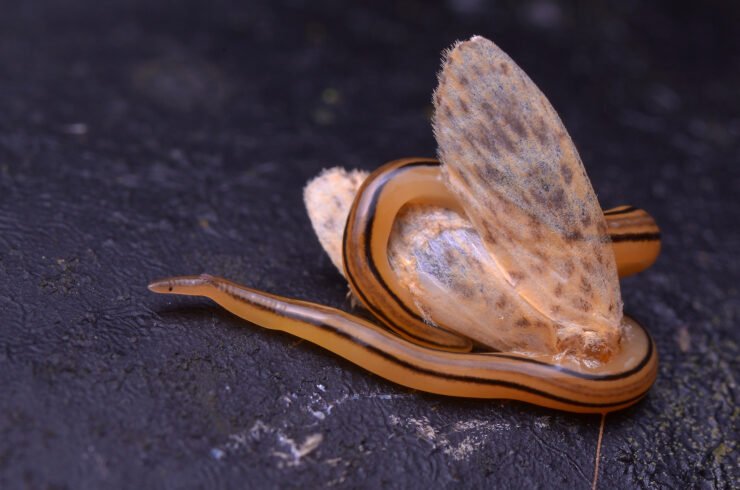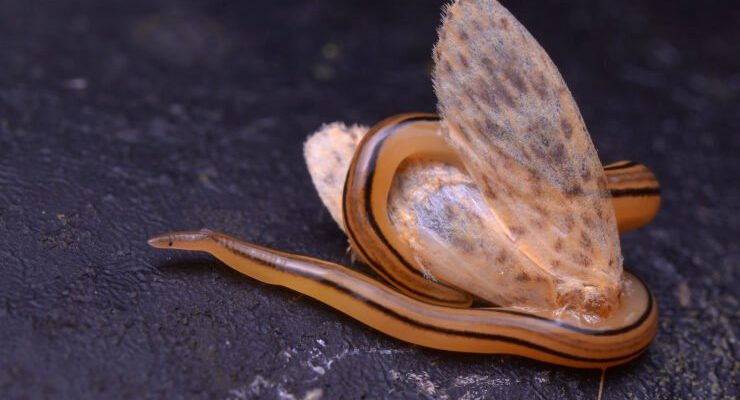
Imagine a world where the hunt is an art form. Ribbon worms have evolved several methods to capture their prey, each one showcasing their unique adaptations. Whether they’re catching small fish, snails, or even other worms, their skills are nothing short of impressive. So, grab your favorite cup of coffee, and let’s dive into the intriguing world of ribbon worm feeding techniques!
What Are Ribbon Worms?
Understanding how ribbon worms feed starts with knowing what they are. These worms can reach impressive lengths—up to 30 meters in some species! They have soft, elongated bodies that can sometimes be brightly colored, which helps them blend into their environment. Found mainly in saltwater, ribbon worms inhabit various environments, from deep sea floors to coastal areas.
Ribbon worms have a unique anatomy that sets them apart from other worms. They possess a proboscis, a tubular structure that can be extended and retracted. Think of it like a snake’s tongue—it helps them sense their surroundings and capture prey. This proboscis is central to how ribbon worms hunt, making them highly efficient predators in their habitats.
Feeding Techniques of Ribbon Worms
So, how do ribbon worms actually snag their food? Here are some documented techniques that show just how resourceful they can be.
1. The Proboscis Strike
One of the most intriguing feeding techniques of ribbon worms is the **proboscis strike**. When a ribbon worm spots its prey, it can quickly launch its proboscis toward the target. This sudden movement can happen in a fraction of a second, surprising the unsuspecting creature.
The proboscis is equipped with specialized glands that can produce adhesive secretions. Once it wraps around its prey, the sticky substance immobilizes the victim, making it easier for the worm to reel it in. It’s a quick and effective way to catch food, and you might say it showcases the ribbon worm’s expertise in stealth hunting.
2. Prey Detection and Pursuit
Ribbon worms have evolved sensory capabilities that help them detect prey. They can sense chemical cues in the water, allowing them to find potential meals nearby. Imagine the excitement of a treasure hunter sniffing out gold; ribbon worms do something similar with their prey!
Once they locate their target, these creatures can actively pursue it, using their muscular bodies to swim. This pursuit can vary in length, depending on how fast the prey is moving. In some cases, ribbon worms may even chase down small fish, demonstrating their adaptability and skill as predators.
3. Subduing Larger Prey
What happens when a ribbon worm encounters larger prey? They have techniques for that too! Some species can wrap around larger animals, using their length and strength to completely encase the target. Once wrapped up, they apply pressure until the prey succumbs.
This method might remind you of how a python constricts its prey—using strength and strategy to overpower. It’s fascinating to consider that even in a world filled with countless feeding strategies, ribbon worms have crafted their own unique approach.
The Role of Environment
The feeding techniques of ribbon worms can also vary based on their environment. For example, those living in sandy areas might rely more on ambush tactics, while those in rocky crevices may adapt their methods.
Access to food sources also plays a significant role. In nutrient-rich waters, you may find these worms using more active hunting techniques. Meanwhile, in less abundant areas, they may stick to ambush methods. This adaptability showcases their resilience and cleverness in navigating challenges within their habitats.
Comparisons to Other Marine Predators
You might wonder how ribbon worms compare to other marine predators. While they share some similarities with creatures like octopuses and certain types of fish, ribbon worms have their own distinct advantages.
For instance, while octopuses use camouflage and intelligence to hunt, ribbon worms rely on their physical adaptations and rapid movement. In contrast to fish, which primarily use speed and agility, ribbon worms utilize stealth and surprise. This variety in ocean feeding strategies illustrates how dynamic marine ecosystems can be.
Why Understanding These Techniques Matters
You might be asking, “Why does all this matter?” Understanding the feeding techniques of ribbon worms can help us appreciate the complexity of marine life. Each species plays a role in the ecosystem, contributing to biodiversity and food chains.
Moreover, studying these worms can aid in environmental monitoring. Since they serve as indicators of ecosystem health, knowing how they feed helps scientists understand their ecological impact and conservation needs. It’s a reminder that even the smallest creatures can have significant roles!
The world of ribbon worms is full of surprises, and their feeding techniques are just one of many wonders. From the quick proboscis strikes to their ability to pursue prey with determination, these creatures have adapted remarkably to thrive in their environments.
By observing and studying these unique feeding habits, we can gain insight into the intricate balances of marine ecosystems. So, the next time you hear about ribbon worms, remember their impressive skills and the fascinating stories they tell about life under the sea. Whether you find them curious or even a little creepy, there’s no denying that ribbon worms are truly remarkable residents of our oceans.

